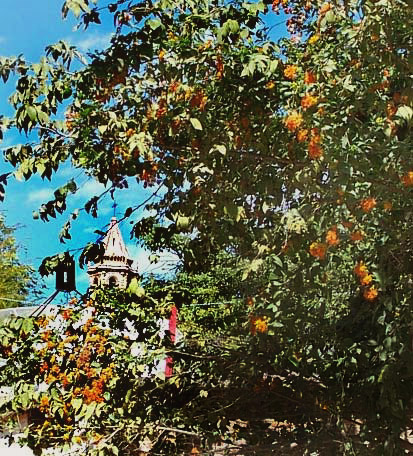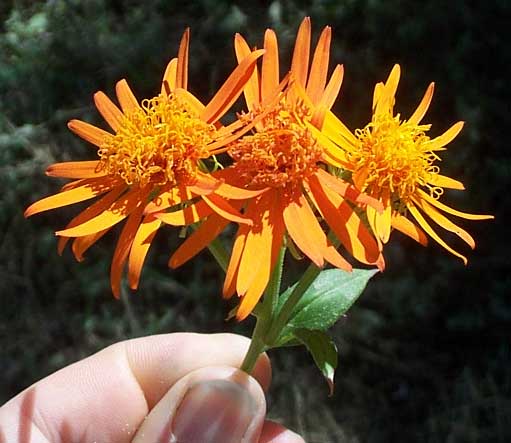Excerpts from Jim Conrad's
Naturalist Newsletter
from the February 2, 2007 Newsletter issued from Sierra Gorda Biosphere Reserve, QUERÉTARO, MÉXICO
MEXICAN FLAME-VINE

If you know your northern wildflowers you may be shaking your head because, first of all, not many northern species of the enormous Composite Family (daisies, zinnias, sunflowers, dandelions, goldenrods, asters, etc.) are vines. Moreover, this plant's genus name, Senecio, is one we especially don't think of as viney. Up north, in the East, Senecios are "groundsels" -- those almost-succulent, orange-yellow weeds of roadsides and wet fields that flower so prettily in very early spring.
However, this is a genuine Senecio, which you can believe more readily when you view the close-up of three of its flowers, with characteristic long-curling stigmas, below:

Well, the genus Senecio is a huge one, with about 1200 species. Moreover, not only are some of the species vines, a few are even trees. Remember that the orange- yellow-flowering bush in the Joya del Hielo moss picture above is a Senecio. Senecios are worth knowing! Technically, three easy-to see features making Senecios Senecios are: 1) Involucral bracts arising in one, non- overlapping series; 2) Achene pappuses consisting of abundant, soft-whitish bristles, and; 3) No "chaffy scales" separating individual disk flowers.
The plant's scientific name, Senecio confusus, is a funny one. Senecio is based on the Latin senex, which means "old man," and probably refers to the ample white fuzz (the pappus bristles) atop the mature fruits, or achenes. "Confusus" is easy to understand. Therefore: "Confused Old Man" -- not really fitting for such a colorful, vigorous plant.